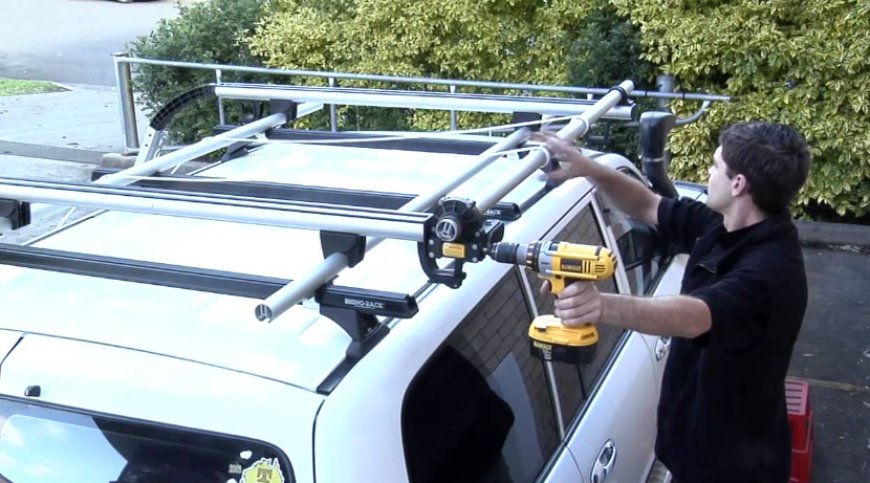Top Roof Rack Loading Mistakes and How to Avoid Them
Avoid costly and dangerous mistakes when loading your roof rack. Discover the top roof rack loading errors and how to prevent them for safer, smoother travels.

When it comes to loading your roof rack, getting it wrong can do more than damage your gearit can pose a serious risk to your safety and that of others on the road. Whether you're headed out for a weekend road trip, hauling extra gear for a family vacation, or transporting outdoor equipment like bikes or kayaks, using your roof rack properly is essential.
Many drivers make critical mistakes that lead to scratched paint, lost equipment, or even accidents. The good news? These issues are 100% avoidable with the right knowledge and a little preparation.
In this guide, well walk you through the most common roof rack loading mistakes andmore importantlyhow to avoid them. By the end, youll feel confident every time you pack up your roof.
Why Roof Racks Are So Useful
Before diving into what not to do, lets quickly highlight why roof racks are so popular.
A roof rack provides valuable extra space when your trunk or backseat just isnt enough. They allow you to carry:
-
Bikes
-
Kayaks
-
Luggage boxes
-
Camping gear
-
Surfboards
-
Skis and snowboards
But with great utility comes great responsibility. A poorly loaded roof rack can lead to noise, instability, fuel inefficiency, or worsedangerous detachment on the road.
1. Overloading the Roof Rack
The Mistake:
Ignoring your vehicles roof weight limit and packing too much on top.
Why Its a Problem:
Every vehicle has a maximum roof load capacity, usually ranging from 100 to 165 pounds (check your owner's manual). Overloading can:
-
Damage your roof or roof rack
-
Impact handling and balance
-
Increase rollover risk
-
Cause gear to fall off while driving
How to Avoid It:
-
Read your vehicles manual for maximum weight allowance.
-
Weigh your gear beforehand.
-
Factor in the weight of the roof rack itself when calculating your total.
2. Poorly Secured Items
The Mistake:
Not tying items down securely or using the wrong type of straps.
Why Its a Problem:
Loose or shifting gear can become a flying hazard at highway speeds. It also creates distracting noise and can damage your vehicle or cargo.
How to Avoid It:
-
Use proper tie-downs, such as ratchet straps or cam buckle straps. Avoid bungee cordsthey stretch and fail easily.
-
Double-check all straps before hitting the road. Pull on the items to ensure nothing moves.
-
Cross-strap for stability. Use straps in an X-pattern when possible to prevent side-to-side movement.
3. Not Balancing the Load
The Mistake:
Stacking everything to one side or having uneven weight distribution.
Why Its a Problem:
An unbalanced load can affect your vehicles handling, especially in turns, or cause the rack to shift.
How to Avoid It:
-
Distribute weight evenly across the roof.
-
Place heavier items in the center and lower down.
-
If using a cargo box or basket, adjust placement to stay centered on your vehicle.
4. Ignoring Height Restrictions
The Mistake:
Forgetting how much taller your vehicle is with gear on the roof.
Why Its a Problem:
Its easy to forget until youre pulling into a garage, drive-thru, or parking structureand suddenly your kayak or rooftop box crashes into a low ceiling.
How to Avoid It:
-
Measure the total height of your vehicle with gear loaded.
-
Place a reminder on your dash or steering wheel when carrying tall loads.
-
Watch for clearance signs in parking garages, gas stations, and fast-food lanes.
5. Not Checking the Roof Rack Itself
The Mistake:
Assuming the roof rack is always ready to go without regular inspections.
Why Its a Problem:
Loose or rusted parts can lead to roof rack failure mid-drive.
How to Avoid It:
-
Inspect your roof rack before every long trip.
-
Check that the rack is firmly attached and not wobbling.
-
Look for signs of wear, rust, or broken components.
6. Using the Wrong Roof Rack Accessories
The Mistake:
Trying to secure gear with generic mounts or skipping mounts altogether.
Why Its a Problem:
Each type of equipment (kayak, snowboard, bike) often requires specialized mounting brackets or cradles. Without them, your gear is more likely to shift or get damaged.
How to Avoid It:
-
Invest in accessories that match your equipment and rack type.
-
Dont improvise with rope or household strapstheyre not safe at highway speeds.
-
Always follow manufacturer guidelines for loading and securing gear.
7. Loading the Roof Rack Alone (When Its Not Safe)
The Mistake:
Trying to lift heavy or awkward gear onto the roof by yourself.
Why Its a Problem:
You risk hurting yourself or damaging the cars roof and paint.
How to Avoid It:
-
Ask for help with large or bulky items like kayaks or rooftop tents.
-
Use loading aids like a step stool or portable platform.
-
Consider installing side loaders or rollers to make loading easier.
8. Skipping a Test Drive
The Mistake:
Loading up and heading out without testing how the car feels.
Why Its a Problem:
You might miss unusual vibrations, wind noise, or gear shifting that could become a serious issue over time.
How to Avoid It:
-
Take a short test drive around the block after loading.
-
Listen for odd noises and check for movement.
-
If something feels off, re-secure the load before starting your trip.
9. Forgetting About Fuel Economy
The Mistake:
Driving with the roof rack or cargo box mountedeven when it's not needed.
Why Its a Problem:
A roof rack adds wind resistance and weight, reducing your vehicles fuel efficiency by up to 25%.
How to Avoid It:
-
Remove the roof rack or cargo box when not in use.
-
Use aerodynamic accessories designed to cut wind resistance.
-
Plan routes to avoid high-speed driving when fully loaded.
10. Not Following the Speed Limits for Roof Racks
The Mistake:
Driving at full highway speeds with gear on top, ignoring manufacturer warnings.
Why Its a Problem:
Most cargo boxes, bags, and roof racks have maximum speed ratings, typically between 6580 mph. Going over can lead to gear failure or loss.
How to Avoid It:
-
Check the speed recommendation on your cargo accessories.
-
Stick to the speed limit or go slightly below it when fully loaded.
-
Be especially cautious in high-wind areas or during rain.
Final Tips for Safe Roof Rack Use
-
Practice loading before a big trip so youre not scrambling last minute.
-
Label your straps or gear for faster, more organized packing.
-
Always carry extra straps and tools in case something loosens during travel.
-
If you're unsure about load security, stop and recheckbetter safe than sorry.
FAQs
1. How much weight can I safely carry on my roof rack?
Every vehicle has a different roof load limit, usually between 100165 lbs. Always check your owners manual, and dont forget to include the weight of the roof rack itself and any accessories when calculating the total.
2. Can I leave my roof rack on all the time?
Yes, but its not always ideal. Leaving your roof rack on can reduce fuel efficiency and expose the rack to weather-related wear and tear. If youre not using it regularly, its best to remove it.
3. Is it okay to use bungee cords to secure gear to the roof rack?
No. Bungee cords stretch under pressure and can snap or come loose while driving. Instead, use durable ratchet straps or cam buckle tie-downs specifically designed for securing cargo.
Conclusion
A roof rack is a fantastic tool when used correctlybut even small mistakes can lead to big problems. Whether you're headed into the mountains or just making room for more luggage, understanding how to load and secure your roof rack properly is key.
By avoiding these common roof rack loading mistakes, youll protect your gear, your vehicle, and everyone sharing the road with you. Happy travelsand load smart!








































